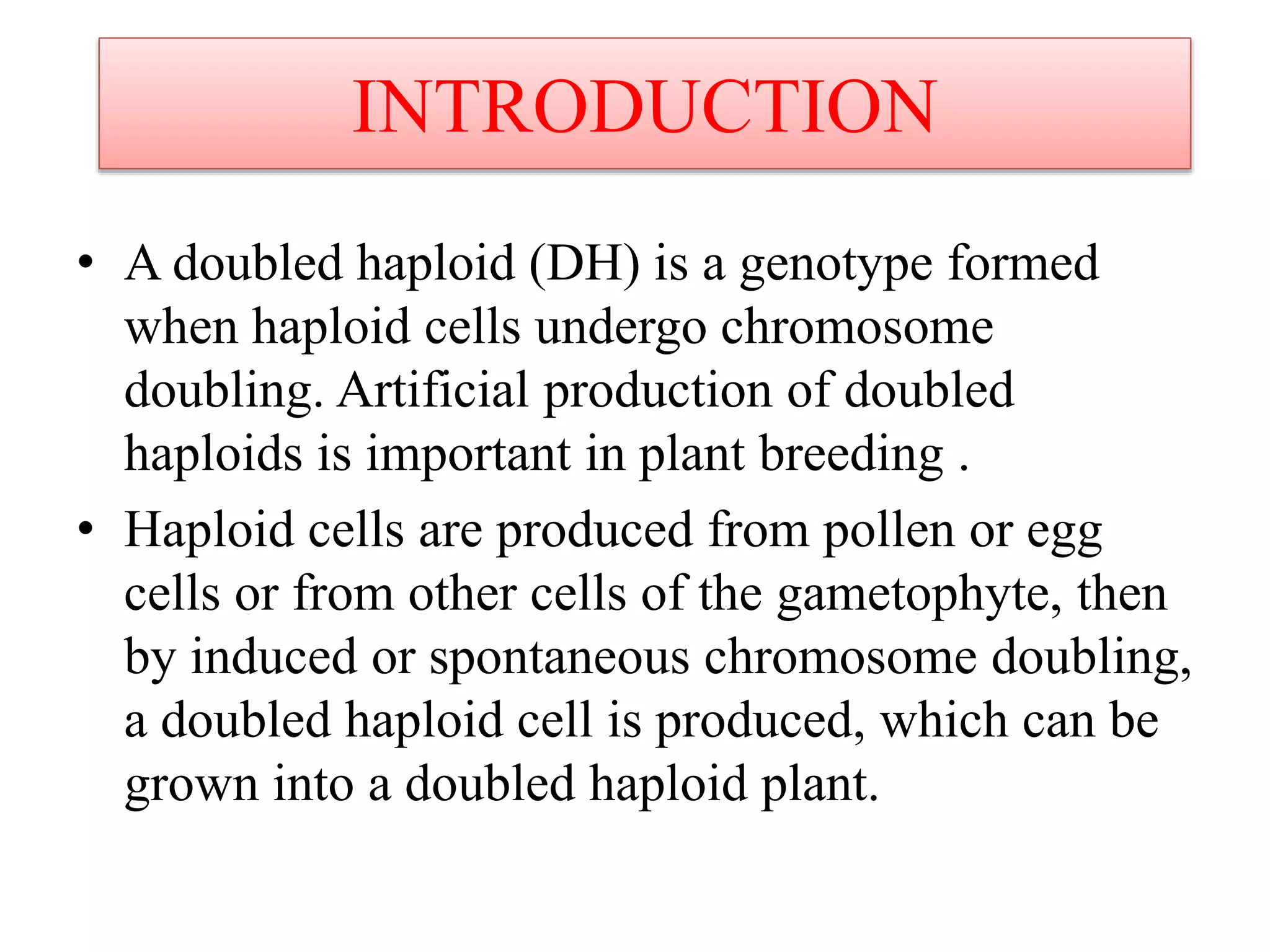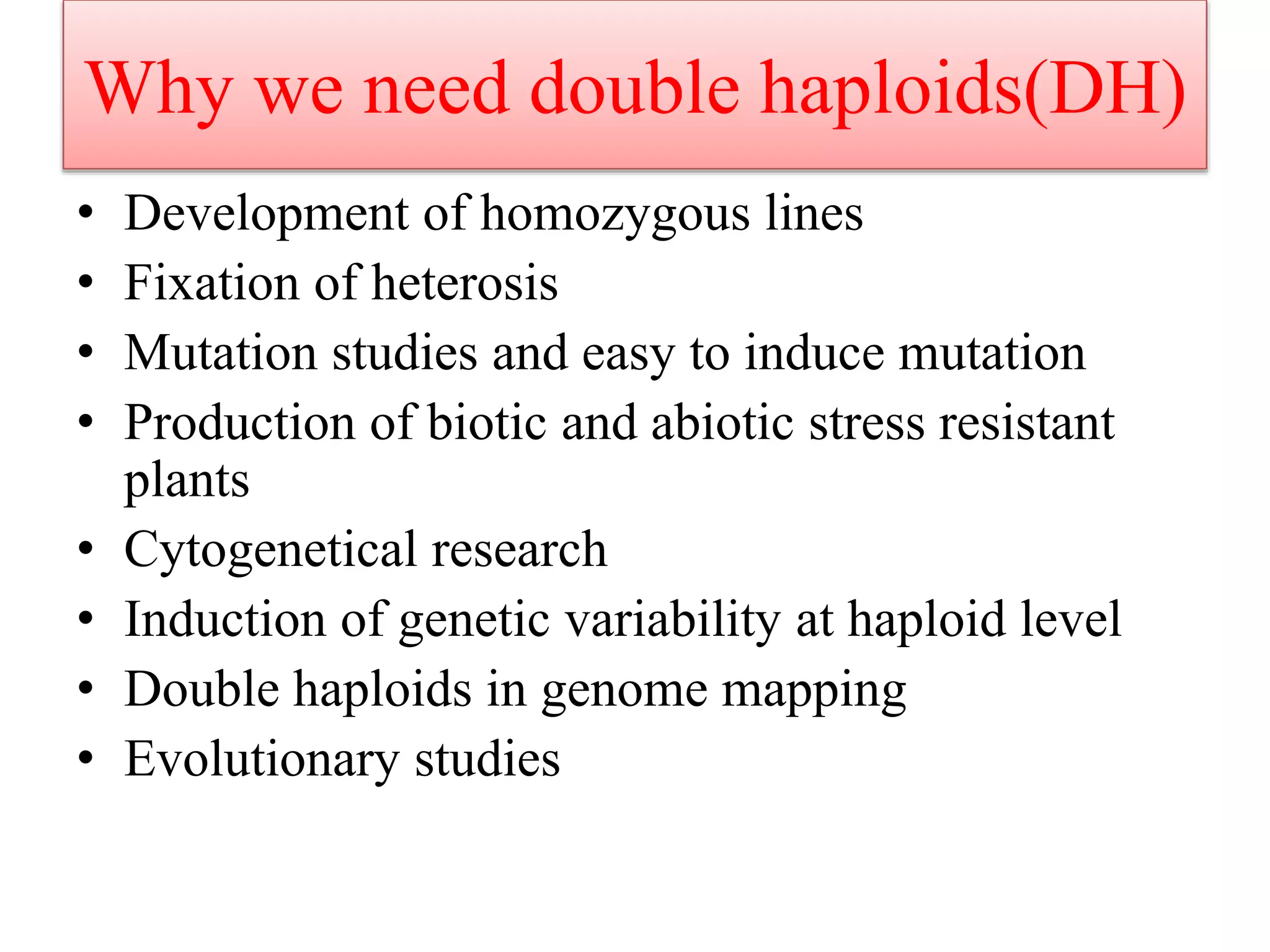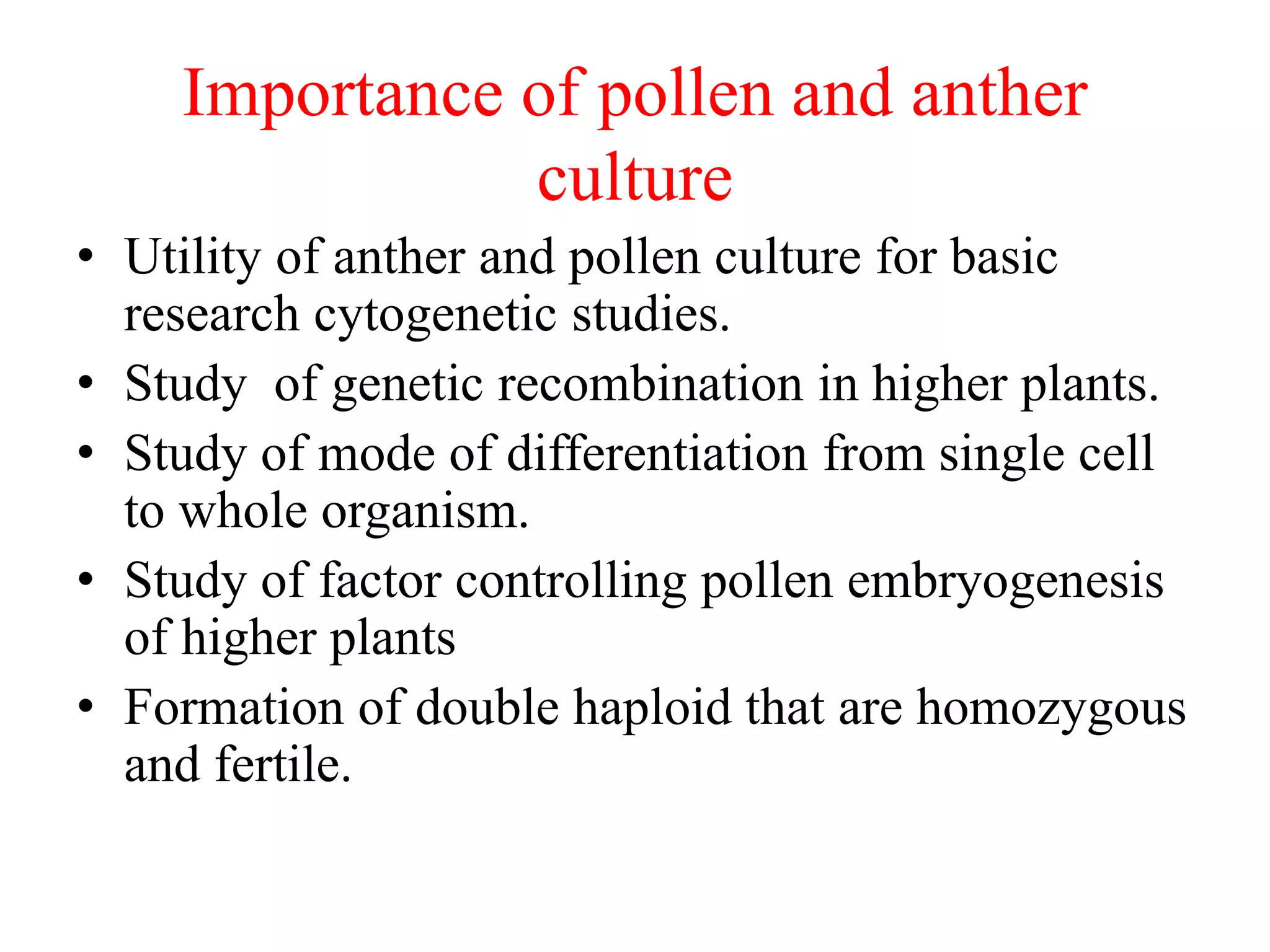The document discusses the production of double haploid plants through anther and pollen culture techniques. It provides background on the history of double haploid development, the importance of double haploids in plant breeding, and methods used to induce haploids including anther culture, pollen culture, ovary slice culture, and ovule culture. Key factors influencing anther culture success are also reviewed, such as genotype, culture medium, microspore stage, temperature, and donor plant physiology. Advantages and disadvantages of generating double haploid lines are presented.




























